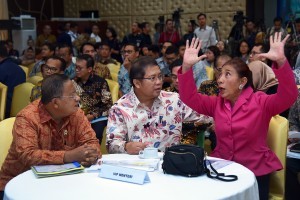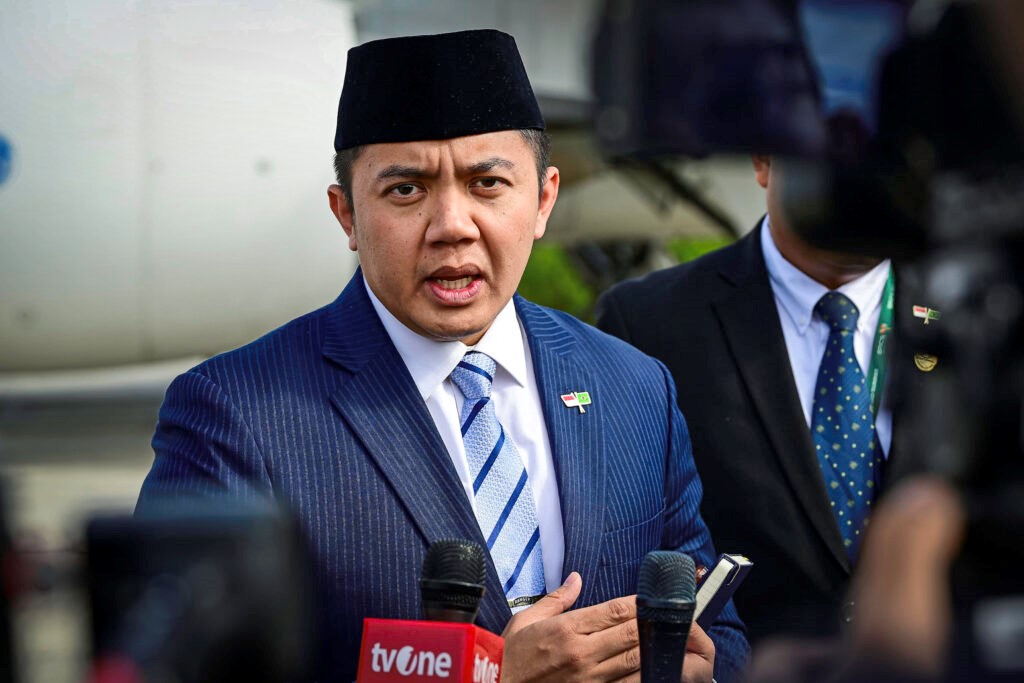GDP of Indonesias Fisheries Sector Rises Significantly: Minister of Marine and Fisheries

Minister of Marine and Fisheries Susi Pudjiastuti converses with a number of ministers, at Auditorium of Building III, Ministry of State Secretariat, Jakarta, Tuesday (23/10). (Photo: AGUNG/PR)
In 2015, fisheries sectors GDP increased by 7.35% and 7.89%, and it continues to rise by 5.95 percent in 2017. This achievement is stimulated by the Governments decision to implement the eradication of Illegal, Unreported and Unregulated (IUU) Fishing or illegal fishing activities that are not reported to authorized institutions or have not been regulated in the existing regulations.
In the third quarter of 2018 this number is predicted to be much higher than in the same quarter last year, said Minister of Marine and Fisheries Susi Pudjiastuti in a press conference on the 4-Year Report of Joko Widodo-Jusuf Kalla Administration, at Auditorium of Building III Ministry of State Secretariat, Jakarta, Tuesday (23/10).
Susi explained, Indonesias GDP from fisheries sector in 2014 was Rp 245.48 trillion, in 2015 Rp was 288.9 trillion, in 2016 Rp 317 trillion, in 2017 Rp 349.53 trillion and in the second quarter of 2018 was Rp 187 trillion, respectively.
Our exports and GDP from fisheries sector are rising significantly, said Susi.
Susi affirmed that the Indonesian Navy also has a pivotal role in the increase because since November 2014, foreign fishing vessels cannot operate in Indonesian territory.
Regarding the significant increase in fisheries production, Susi said that the increase in value is actually higher than its volume. So, there is a wide gap between the volume and the value.
This means that our fisheries sector is already heading towards sustainable fisheries with better value and quality. Thus, the volume may decrease but the value increases, Susi added.
Susi went on say, aquaculture production also shows a significant increase, such as shrimp, catfish, tilapia, crab, snapper, etc. However, seaweed production in 2017 experienced a decrease because of bad weather and high waves that caused low productivity.
We also continuously conduct a campaign to increase fish consumption in order to improve Indonesias human resources. This is in line with President Joko Jokowi Widodos program which will prioritize the development of Indonesian human resources, continued Susi.
On the occasion, Susi denied the allegations that our fisheries exports are declined. She explained, Indonesian fish exports are mostly in the form of processed food.
The increase is in the form of processed food, including meatballs, nuggets, fish cakes, and so on, Susi explained.
According to Susi, the export value at the end of 2018 will be much higher than 2017, because until the second quarter of 2018, the number already reaches US$ 2,272.67 million. Meanwhile, in the same period last year it only reached US$ 2,013 million, thus the increase is more than 12.88 percent, she continues.
For the first time, our fisheries volume has exceeded other ASEAN countries and be number 1 in Southeast Asia, Susi concluded. (DND / FID / UN / AGG / ES) (STU/MMB/Naster)








